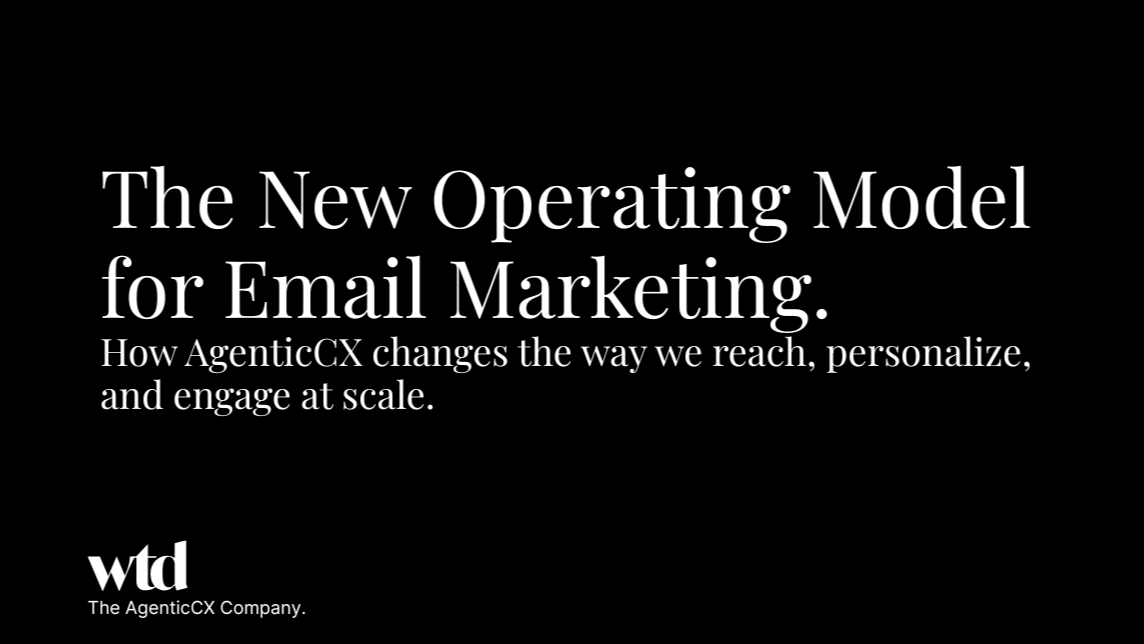The Foundations of Email Need a Redesign
Email has evolved dramatically on the surface: new tools, smarter interfaces, and more data than ever. But the underlying operating model most teams still use hasn’t kept up.
Most “modern” CRM programs still follow the same sequential workflow we’ve used for the last two decades:
- Strategy writes a brief and hands it off.
- Data pulls a segment based on static rules.
- Creative develops assets to meet the timeline.
- Legal reviews copy before launch.
- Ops executes the send.
It’s a linear assembly line. A model built for a time when email was batch-and-blast with better targeting. We’ve layered on dynamic content, modular templates, journey builders, and “AI subject lines,” but the system underneath is still deterministic, rigid, and fundamentally slow.
If/then logic isn’t intelligence. Scheduled sends aren’t responsive. And building journeys like decision trees creates an illusion of control over inherently dynamic customer behaviour.
Why Linear Journeys Break (and What Comes Next)
Every experienced CRM leader has lived this pattern:
- A journey is carefully built in the canvas.
- Rules, triggers, and branches are meticulously defined.
- It’s published with confidence.
- And within days, it begins to fall apart.
Real behaviour doesn’t follow perfect logic. Data lags. Offers expire mid-flight. Preferences shift. Context changes. Inventory fluctuates. And the more we chase flexibility by adding branches and exceptions, the more brittle the whole system becomes.
We compensate with patches. We clone logic. We redesign what was just launched. Not because the team failed, but because the architecture did. It was never built to handle this level of dynamic complexity.
AgenticCX doesn’t ask marketers to work harder. It replaces the architecture entirely.
With intelligent agents orchestrating execution in real time, responding to each user, each constraint, each context, marketers can step out of firefighting and back into forward strategy. The old canvas was an illusion of control. It’s time to design for reality.




